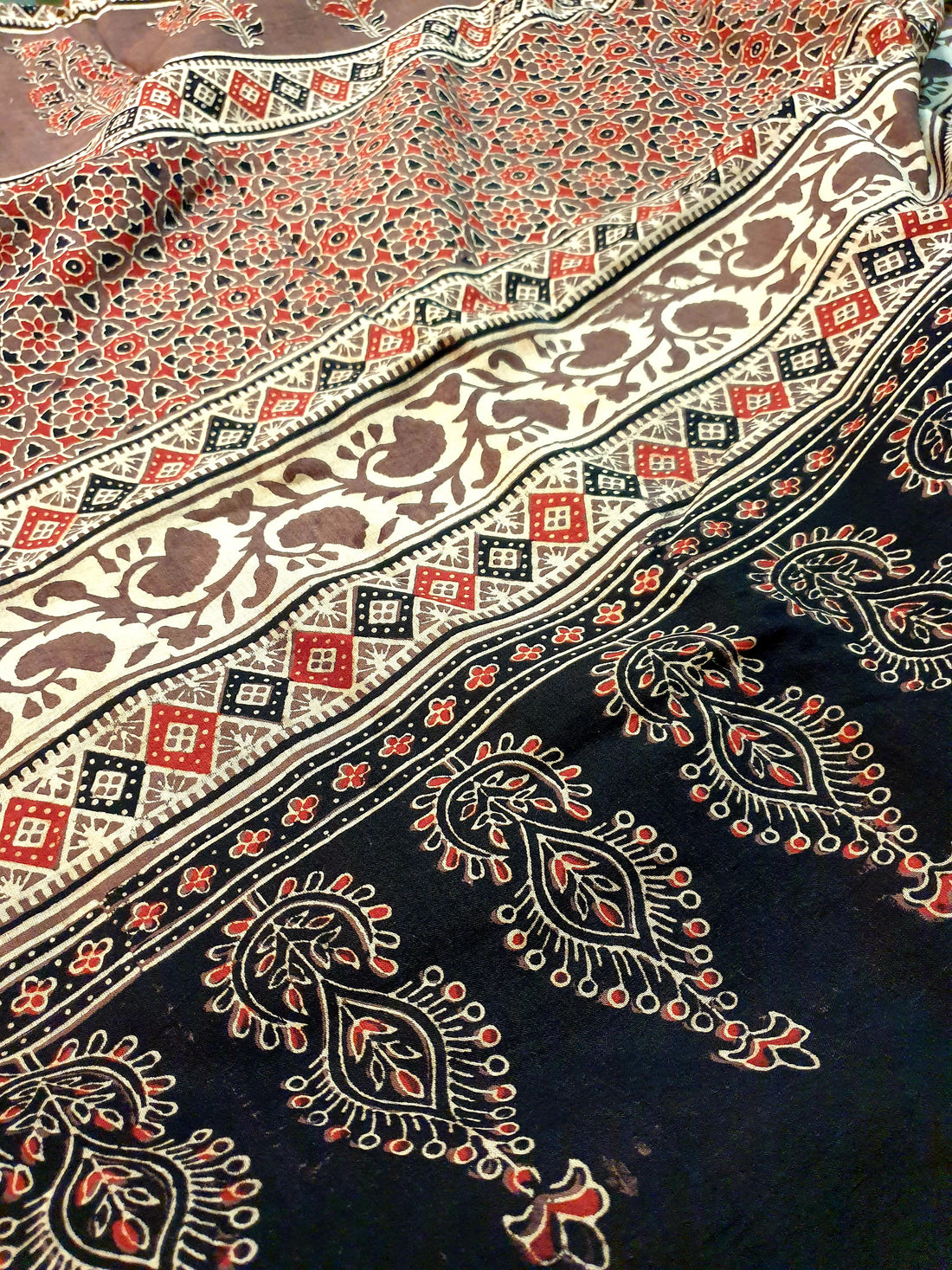Ajrakh is a traditional style of block printing that has its roots in the Indian subcontinent, particularly in the regions of Gujarat and Rajasthan. The name "ajrakh" is derived from the Arabic word "Azrak," which means blue. This art form is known for its intricate geometric and floral patterns, often featuring indigo and madder red dyes.
Ajrak hand block refers to the traditional hand-block printing technique used in the creation of Ajrakh textiles. The term "hand block" refers to the process of printing patterns on fabric using intricately carved wooden blocks by skilled artisans.
Here's a brief overview of the Ajrakh hand block printing process:
-
Design Carving: Artisans carve intricate designs onto wooden blocks. These designs often include geometric patterns, floral motifs, and other traditional elements.
-
Fabric Preparation: The fabric, typically cotton or silk, undergoes a preparation process that includes washing and treating it with a mixture of natural ingredients like camel dung and castor oil. This treatment makes the fabric more absorbent to natural dyes.
-
Block Printing: Skilled artisans then apply the carved wooden blocks to the fabric by hand, using natural dyes. Indigo is commonly used for blue, while madder root may be used for red tones. The block is pressed onto the fabric repeatedly to create the desired pattern.
-
Dyeing Process: The fabric may go through multiple rounds of block printing and dyeing, with each layer adding complexity to the design. Some designs may require precise alignment of blocks to create intricate patterns.
-
Finishing: After the block printing and dyeing processes are complete, the fabric is washed to remove excess dye and fix the colors. This may be followed by additional treatments to enhance the texture and appearance of the fabric.
Ajrakh hand block printing is a labor-intensive and time-consuming craft, requiring skill and precision. The resulting textiles are known for their vibrant colors, intricate patterns, and cultural significance. Ajrakh fabrics are often used to create traditional clothing like sarees, scarves, and shawls. The art form has been passed down through generations and continues to thrive as a part of the cultural heritage in regions like Gujarat and Rajasthan in India.
